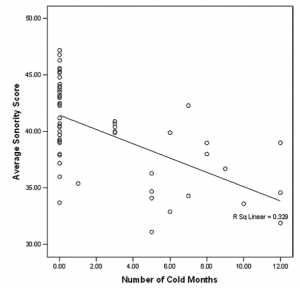A new paper in plos one, published today, has shown that experiments on human cognition needn’t be confined to the lab.
Experiments on human cognitive abilities, such as language, often rely on testing small and homogeneous groups of volunteers (mostly undergraduate students) coming to research facilities where they are asked to participate in behavioral experiments. This arrangement is not ideal as your sample will not be representative of the population as a whole and will also be restricted as there is only so many participants that money and time will allow you to get into the lab to be tested.
This new research by Dufau et al. shows that the sampling limitations which laboratory experiments produce can be overcome by using smartphones. Using smart phone technology, data can be collected for cognitive science experiments from thousands of subjects from all over the world.
To illustrate how this can be done the authors carried out a large-scale study using iPhone and iPads. This was a linguistic study looking at people’s ability to distinguish words from similar non-words.
The project, which began in December 2010 has managed to collect data from 4,157 subjects in just 4 months! This can be compared with the English Lexicon Project which acquired a similar volume of data using traditional methods which took more than 3 years.
The data was collected using applications which were produced in seven languages (English, Basque, Catalan, Dutch, French, Malay, Spanish). Smartphones can also support studies in alphabets other than Roman including Chinese, Greek, and Japanese. This creates the opportunity to create large-scale cross linguistic studies without even having to move from behind your desk.
Whilst the example here is linguistic there is every reason that smart phones can be implemented in looking at how universal other areas of cognitive behaviour are. Or even neurosceince and experimental philosophy. I wonder if it would be possible to carry out experiments using transmission chains using smart phones.
However, I do worry that using things like iPhones will have the same problems as using things like mechanical turk, as it means that experimenters will not be able to make sure that participants are carrying out the tasks properly and removes quite a lot of control. Smartphones are also still a luxury and therefore only people within a certain socio-economic class will have smartphones, so maybe these methods may not reach such a wide audience, which seems to be why they’re being proposed in the first place.
The authors of the paper are hailing smartphones “a potential revolution in cognitive science” but only time will tell if this really kicks off!
Reference
Stephane Dufau, Jon Andoni Dun abeitia, Carmen Moret-Tatay, Aileen McGonigal, David Peeters, F.-Xavier Alario, David A. Balota, Marc Brysbaert, Manuel Carreiras, Ludovic Ferrand, Maria Ktori, Manuel Perea, Kathy Rastle, Olivier Sasburg, Melvin J. Yap, J (2011). Smart Phone, Smart Science: How the Use of Smartphones Can Revolutionize Research in Cognitive Science PlosOne, 6 (9) : 10.1371/journal.pone.0024974


